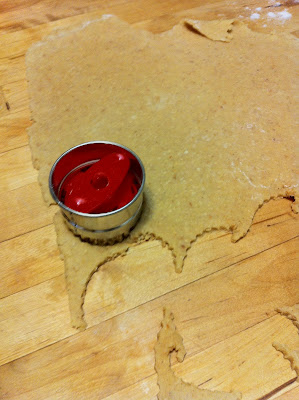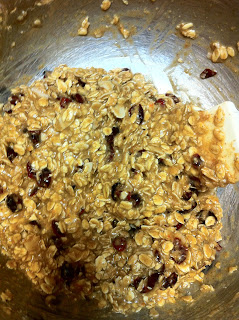Black-eyed peas originated in
West Africa; they go back a far as Ancient Egypt. During the time of Pharaoh,
they were a sign of good luck and prosperity.
This tradition continued when African slaves came to the America. In the
South, blacks and whites embraced the tradition by cooking black-eyed peas with
some type of pork. In many African
American household, the tradition continues.
Growing up New Year’s dinner
consisted of black-eyed peas, potato salad, collard greens, pig feet,
chitterlings and rice. As a child, I can
remember walking into our build on the Eve of the Holiday
and being greeted by the smell of cured pork and chitterling that permeated the entire building .
As we have all gotten older and
perhaps wiser, black-eyed peas cooked with pork and the entire New Year’s Feast
is a tough sell to my family. So I have
adapted this recipe for black-eyed peas from Marcus Samuelsson’s The Soul of a New Cuisine. The
Berber spices, coconut milk and ginger add distinct flavor and complexity to
this dish. You will not miss the pork!
Black-Eyed Peas
Black-Eyed Peas
Ingredients
1
½ cup black-eyed peas soaked in water for 8 hours and drained
2
tablespoons Infused Olive Oil
1
large red onion, diced
1
Scotch bonnet, Serrano or Jalapeno pepper seeded and finely diced
3
cloves garlic, chopped
2
tablespoons minced ginger
1
tablespoon fresh turmeric peeled and chopped or 1 teaspoon ground turmeric
1
tablespoon Berbere Spice
1
teaspoon salt
1
½ cup chicken/vegetable stock
1
½ cup light coconut milk
½
cup diced tomatoes
¼
cup chopped cilantro
¼
cup sliced scallions
Directions
In
a medium saucepan simmer peas in 1.5 quarts of water, uncovered for 45 minutes
or until tinder but not falling apart.
Drain
and set aside
Heat
oil in saucepan.
Saute onions, chili, garlic, ginger and fresh turmeric until onions are translucent.
Add
Berber Spice, salt, stock and coconut milk; simmer for 40 minutes
Add
tomatoes, cilantro and scallions and simmer for 5 minutes more.
May you have a Blessed and Prosperous New Year!
Infused Olive Oil
Ingredients
½
cup extra virgin olive oil
2
teaspoons minced ginger
1
clove garlic, minced
1
shallot, sliced
8
cardamom pods
1
teaspoon fenugreek seeds
1
teaspoon ground cumin
½
teaspoon turmeric
1
teaspoon dried oregano
½
teaspoon dried basil
½
bay leaf
Directions
Heat
oil in a small saucepan; do not all oil to smoke.
Add
all ingredients.
Stir
occasionally; allow ingredients to steep for 15 minutes
Berbere Spice
For
those of you who don’t want to prepare this spice blend Kalustyans sells a Berbere Spice that is
very good. I enjoy making spice blends
so I made mixture often used in Ethiopian Food.
Ingredients
½
teaspoon fenugreek seeds
¼
cup dried chilies
¼
cup dried paprika
1 teaspoon onion powder
1
tablespoon salt
1
teaspoons ground ginger
½
teaspoon ground cardamom
½
teaspoon nutmeg
¼
teaspoon garlic powder
1/8
teaspoon ground cloves
1/8
teaspoon ground cinnamon
1/8
teaspoon ground allspice
Directions
Finely
grind fenugreek seeds with a mortar and pestle or an electric spice grinder.
Combine
all ingredients
Store
in an airtight container until ready to use































